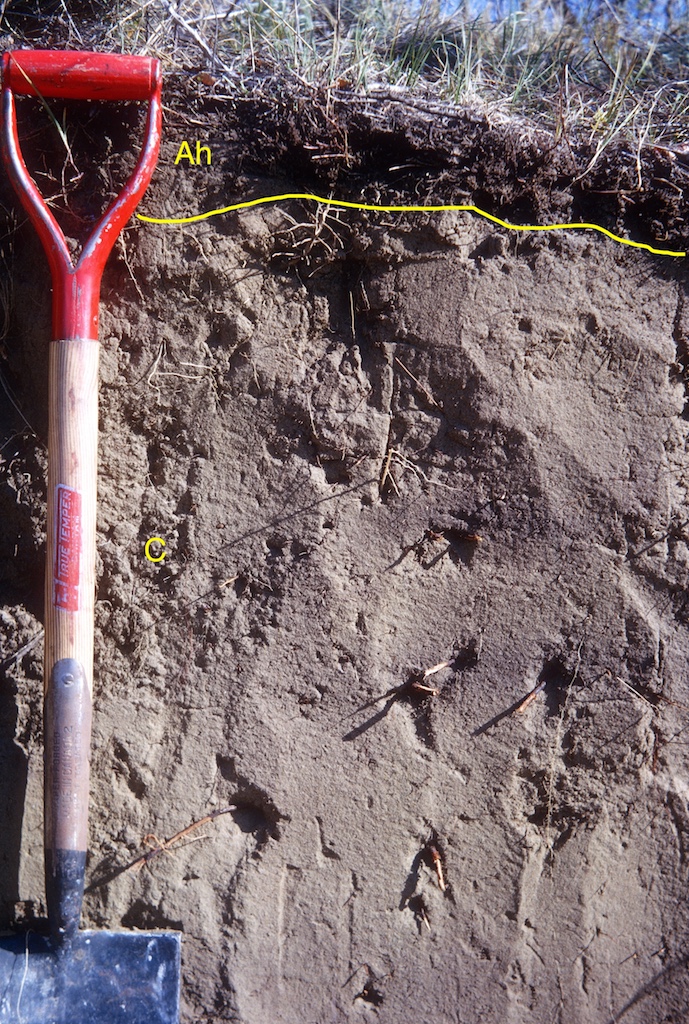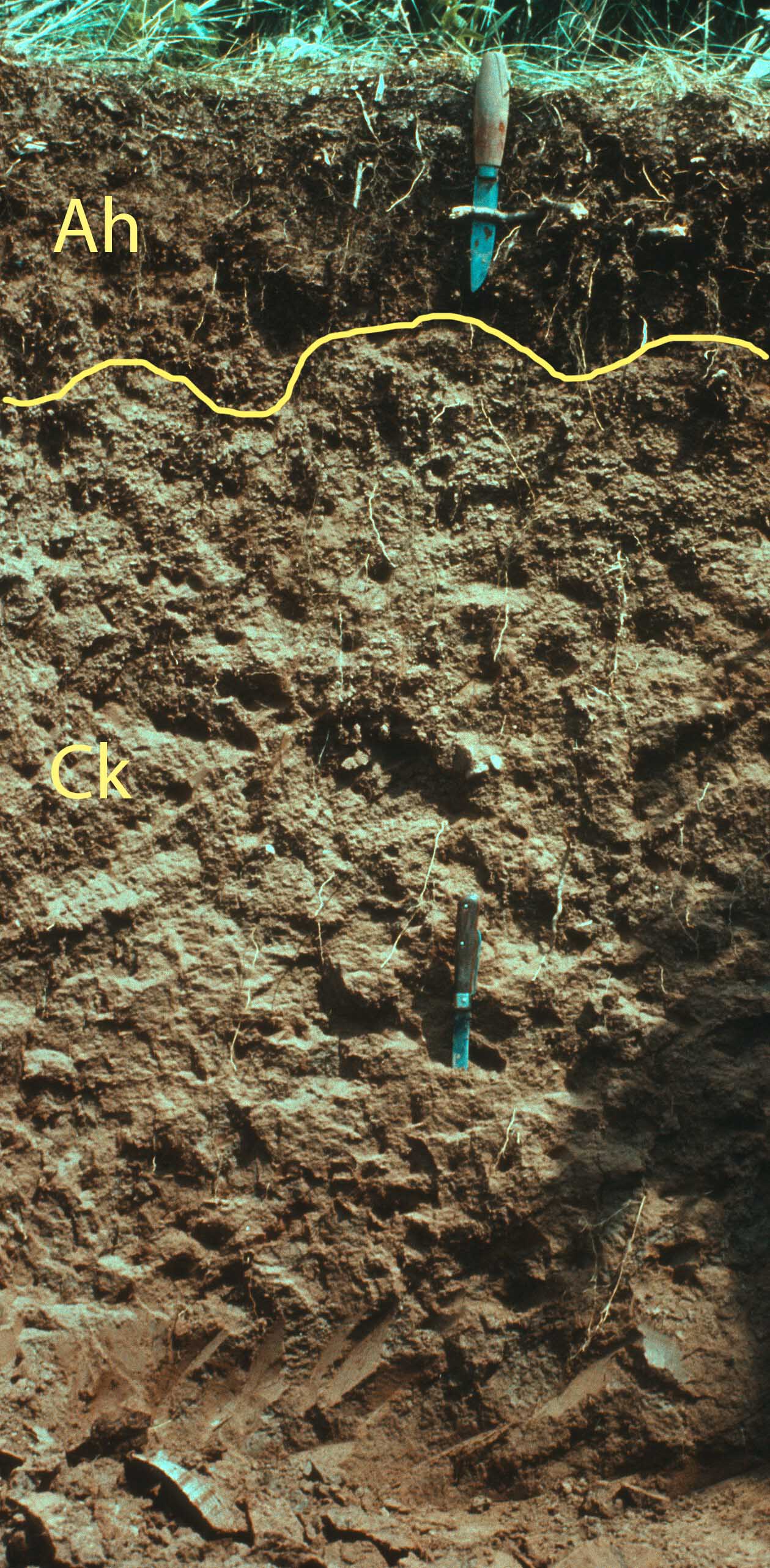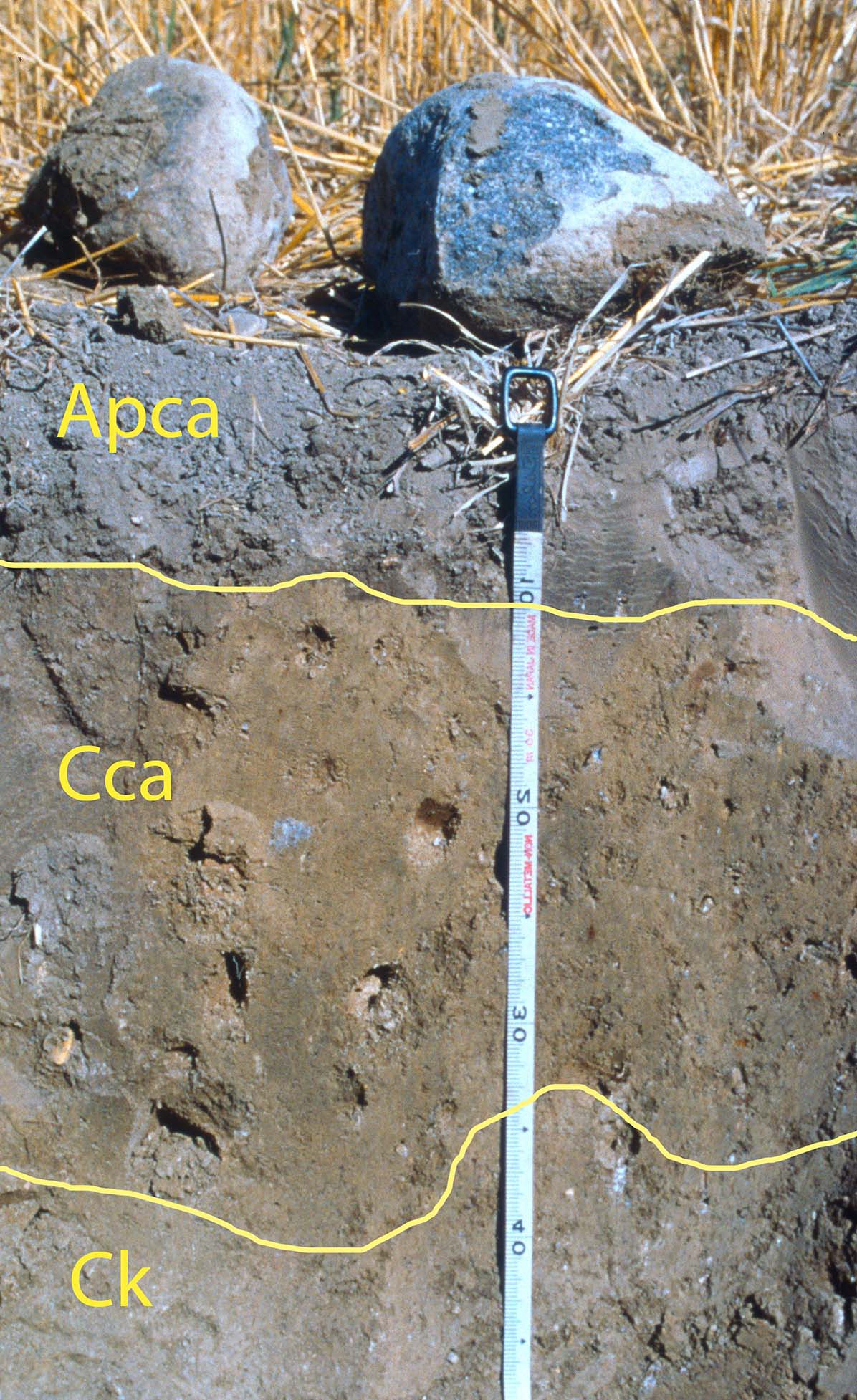Regosol

This Regosol has formed on an unstable, dune sand site. There is minimal soil formation except for the development of a thin organically enriched Ah horizon from the roots and above-ground residues of the plants growing on the dune. There is no evidence of the formation of a B horizon in the profile.
Contributor: Roly St. Arnaud
Location: Saskatchewan
Humic Regosol

The Humic Regosol in this image is very similar to the Regosol example that an Ah horizon greater than 10 cm thick occurs. This soil is formed on till parent material and shows us what Chernozemic soils would have looked like in an early stage of their development. The till parent material in the C horizon still has calcium carbonate throughout the horizon. A Bm horizon will begin to form when the calcium carbonate begins to dissolve and be transported out of the layer under the Ah.
Contributor: Soils of Canada slide set
Cultivated Humic Regosol

This is a very common form of Regosolic soil found throughout cultivated areas of Canada in upper slope positions. Prior to cultivation this soil was probably a thin member of the Chernozemic order (with an Ah and a Bm horizon). Tillage erosion has progressively removed surface soil from the site and the organically enriched Ap horizon has been mixed with the underlying Cca horizon, giving an Apca horizon. This horizon gives knolls in many cultivated landscapes whitish or light gray appearance.
Contributor: Dan Pennock
Location: Watrous, Saskatchewan
